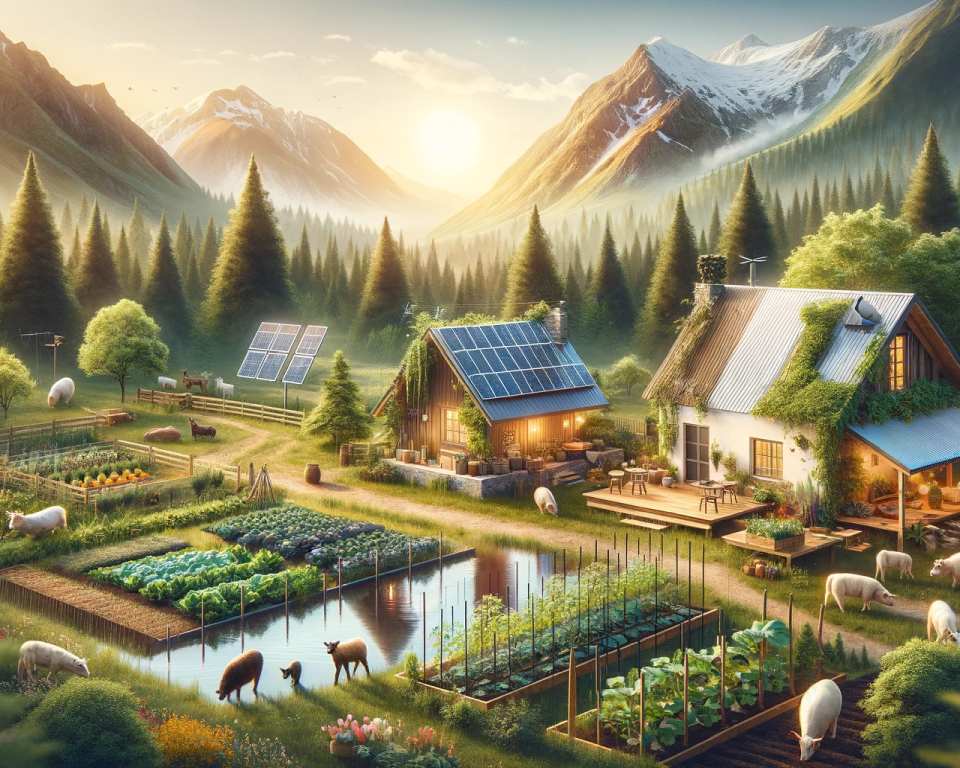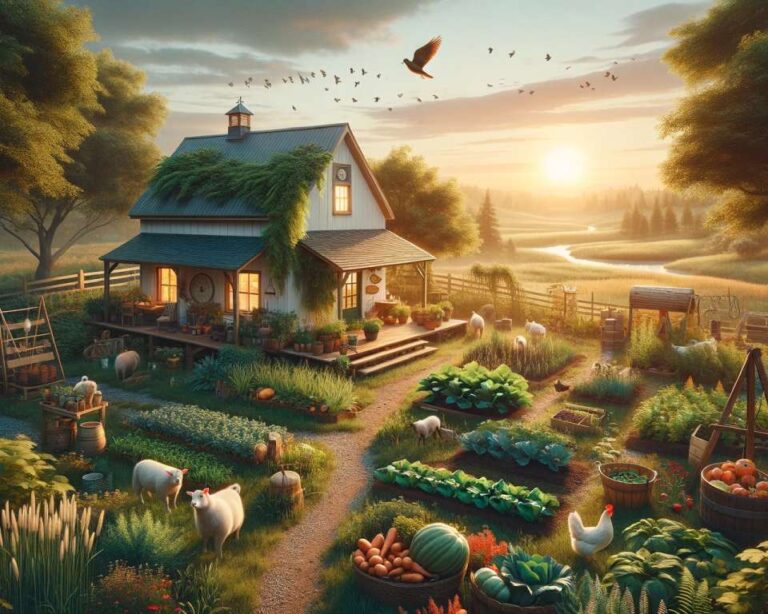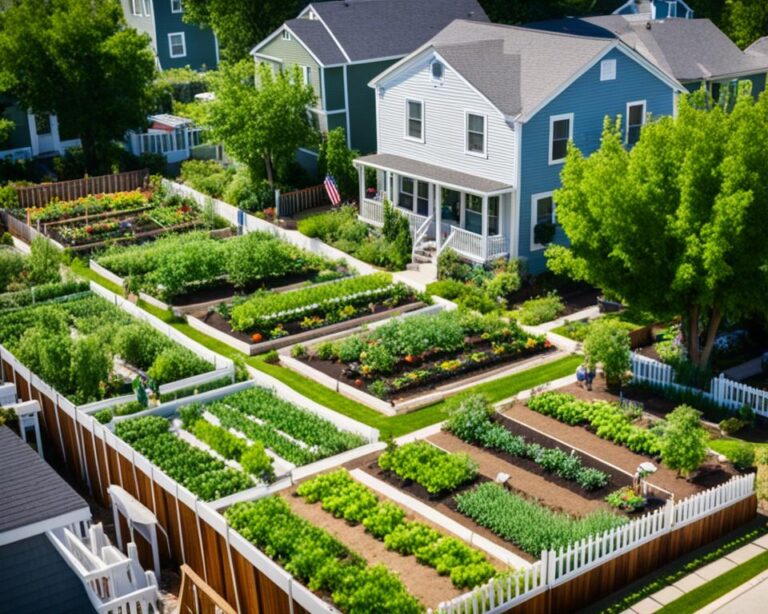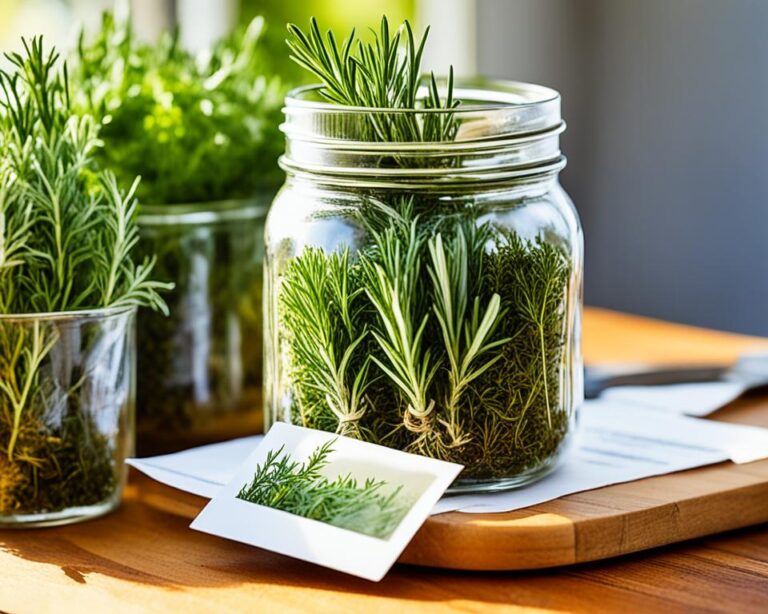Mastering Essential Homesteading Skills for Sustainable Living
Welcome to our comprehensive guide on mastering essential homesteading skills for sustainable living. As more and more individuals seek self-sufficiency and a closer connection to nature, homesteading has gained popularity across the United States. In this article, we will explore the vital skills required to thrive as a homesteader, empowering you to create a self-sustainable lifestyle.
From organic gardening and food preservation to livestock management and renewable energy, we will delve into the practical skills necessary for a successful homesteading journey. Discover the art of natural building, the secrets of foraging, and the importance of self-sufficiency in our modern world. Whether you are dreaming of off-grid living or simply want to develop your green thumb, this guide will provide you with the knowledge and confidence to embark on your homesteading adventure.
Throughout this series, we will share practical tips, expert advice, and step-by-step instructions to help you master each essential skill. By integrating these skills into your daily life, you can reduce your ecological footprint, increase your self-sufficiency, and nurture a deep connection with the natural world around you.
Join us as we explore the world of homesteading and unlock the potential for sustainable living. From organic gardening to renewable energy, we will equip you with the tools you need to thrive as a modern homesteader. Let’s embark on this journey together, taking significant steps towards a more sustainable and fulfilling way of life.
Essential Homesteading Skill #1: Gardening
Gardening is at the heart of homesteading. It allows us to reconnect with nature and become self-sufficient by growing our own food. With organic gardening skills, we can cultivate a diverse range of fruits, vegetables, herbs, and even flowers for beauty and pollinators.
One of the first steps in successful gardening is soil preparation. By enriching the soil with organic matter such as compost and manure, we ensure that our plants receive the essential nutrients they need to thrive. Proper soil preparation sets the foundation for healthy and productive plants.
Crop rotation is another vital technique to maintain soil fertility and prevent the buildup of pests and diseases. By changing the location of crops each year, we disrupt pest and weed cycles, reducing the need for chemical interventions. This practice promotes long-term soil health and enhances our organic gardening efforts.
Pest and weed management is a key aspect of successful gardening. Instead of relying on synthetic pesticides, we can employ natural methods such as companion planting, beneficial insects, and physical barriers to ward off pests. Regular weeding and mulching help suppress weed growth, keeping our plants healthy and strong.
Furthermore, learning food preservation techniques is essential for homesteaders. By canning, freezing, or drying excess produce, we can enjoy our harvest year-round, ensuring nothing goes to waste. These food preservation skills help us maintain our self-sufficiency and reduce reliance on store-bought items.
“Gardening is not just a skill; it is a therapeutic and rewarding experience. Connecting with the earth and nurturing plants allows us to witness the miracles of growth and harvest firsthand.”
By acquiring organic gardening skills, we gain a deeper understanding and appreciation for the natural world. We become more self-sufficient and reduce our environmental impact, creating a sustainable future for ourselves and generations to come.
Skills covered in this section:
- Soil preparation for optimal plant nutrition
- Crop rotation to maintain soil health
- Pest and weed management using organic methods
- Food preservation techniques for long-term self-sufficiency
Essential Homesteading Skill #2: Animal Husbandry
On our homestead, animal husbandry plays a vital role in our self-sufficiency journey. It involves the care and management of livestock, ensuring their well-being and utilizing their products for various purposes. Livestock management skills encompass a range of responsibilities, from providing proper care and feeding to overseeing breeding and reproduction.
When it comes to caring for livestock, it is essential to understand their specific needs. Each animal species has unique requirements for nutrition, shelter, and overall health. By gaining knowledge and skills in animal husbandry, we can ensure that our livestock is healthy and thriving.
The Care and Feeding of Livestock
Proper care and feeding are crucial aspects of livestock management. It starts with providing a suitable habitat or shelter that protects the animals from harsh weather conditions and ensures their safety. Creating a clean and comfortable living environment is essential to promote their overall well-being.
We also need to be knowledgeable about the nutritional needs of different animals and the appropriate feed options. This includes understanding the nutritional composition of the feed, the right portion sizes, and any additional supplements necessary to maintain their optimal health and productivity.
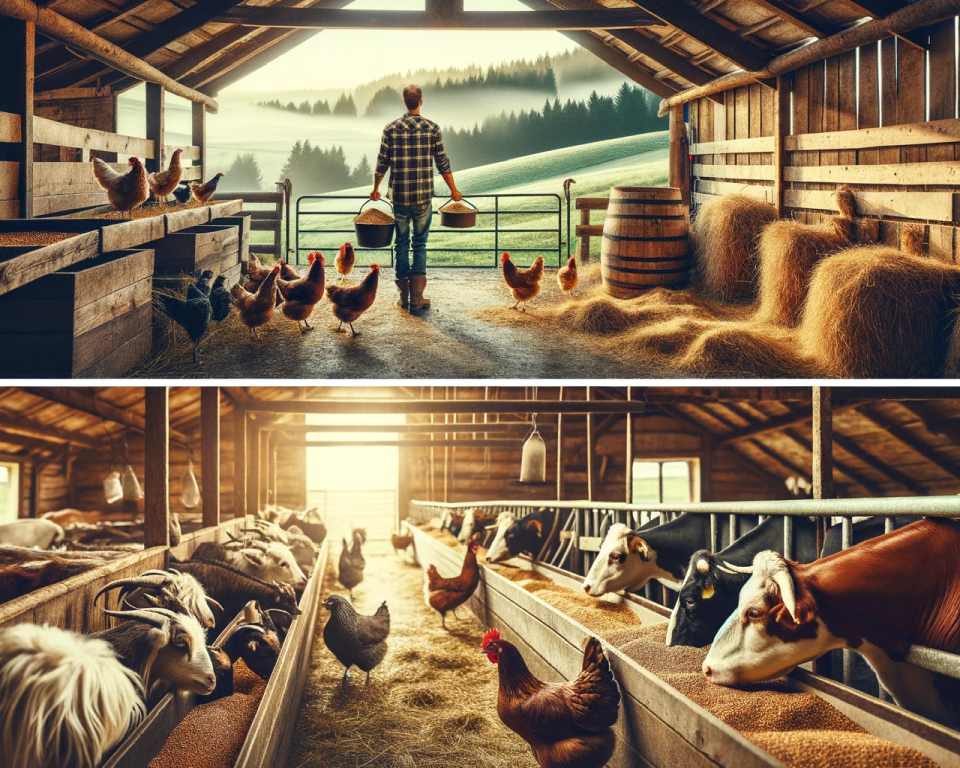
Breeding and Reproduction
Breeding and reproduction are essential components of animal husbandry for those of us seeking to expand our livestock population. Understanding the reproductive cycles of our animals and knowing when and how to breed them ensures successful reproduction and the growth of our herds or flocks.
Animal Health
Maintaining the health of our livestock is a top priority. By closely monitoring their well-being, we can detect any signs of illness or injury early on and take prompt action. This involves regular veterinary check-ups, vaccinations, parasite control, and implementing effective biosecurity measures to prevent the spread of diseases.
Dairy and Meat Processing
For those of us raising animals for food, learning about dairy and meat processing is essential. With the right skills and knowledge, we can utilize the resources from our livestock responsibly. This includes efficiently processing milk into dairy products such as cheese, butter, and yogurt, as well as handling the butchering and processing of meat for consumption.
“Animal husbandry is not just about tending to our livestock; it’s about becoming stewards of their well-being and utilizing their products with care and respect.”
Mastering animal husbandry skills empowers us to lead a more sustainable and self-sufficient lifestyle. By nurturing our livestock, we can create a harmonious relationship with our animals while reaping the benefits of their contributions to our homestead.
Essential Homesteading Skill #3: Food Preservation
Knowing how to preserve food is crucial for homesteaders. When we have a bountiful harvest or come across a great deal at the local farmers’ market, it’s important to have the skills to store and enjoy that nutritious food year-round. Food preservation allows us to extend the shelf life of fruits, vegetables, and meats, reducing waste and ensuring we have access to wholesome food even during the off-season.
There are various methods of food preservation that every homesteader should learn. Let’s explore some of the most popular ones:
Canning
Canning involves sealing food in jars and preserving it by heat processing. This method not only preserves the flavor and nutritional value of fruits and vegetables but also allows us to enjoy them even when they’re out of season. Whether it’s homemade tomato sauce or pickled cucumbers, canning is a versatile skill that ensures our pantry is stocked with delicious, home-preserved goodies.
Fermentation
Fermentation is an age-old preservation method that not only extends the shelf life of food but also enhances its flavor and nutrition. From tangy sauerkraut to homemade kombucha, fermentation introduces beneficial bacteria that aid in digestion and improve overall gut health. This method is perfect for preserving cabbage, cucumbers, and other vegetables, while also adding a probiotic boost to our diet.
Dehydration
Dehydration involves removing the moisture from food, thereby inhibiting the growth of bacteria, yeast, and mold. By dehydrating fruits, vegetables, and herbs, we can create delicious and nutritious snacks that are perfect for on-the-go or for use in delicious recipes. Dehydrated food can be stored for long periods without the need for refrigeration, making it an excellent option for off-grid living or extended adventures in the great outdoors.
Homemade Jams and Pickles
There’s nothing quite like the taste of homemade jams and pickles, and mastering the art of creating these preserves is an essential homesteading skill. Whether it’s a jar of strawberry jam or a batch of tangy dill pickles, homemade preserves allow us to enjoy the flavors of summer all year round. Plus, they make excellent gifts for family and friends!
Meat Preservation
When it comes to meat preservation, smoking and curing are traditional techniques that have been used for generations. These methods not only add flavor but also extend the shelf life of different cuts of meat. Whether we’re smoking sausages or curing a ham, knowing how to preserve meat ensures we have a sustainable and protein-rich food source even without access to refrigeration.
By honing our food preservation skills, we can reduce food waste, promote self-sufficiency, and savor the flavors of homemade goodness throughout the year. So, let’s roll up our sleeves, gather our canning jars, and embrace the art of preserving food from our own bountiful harvests!
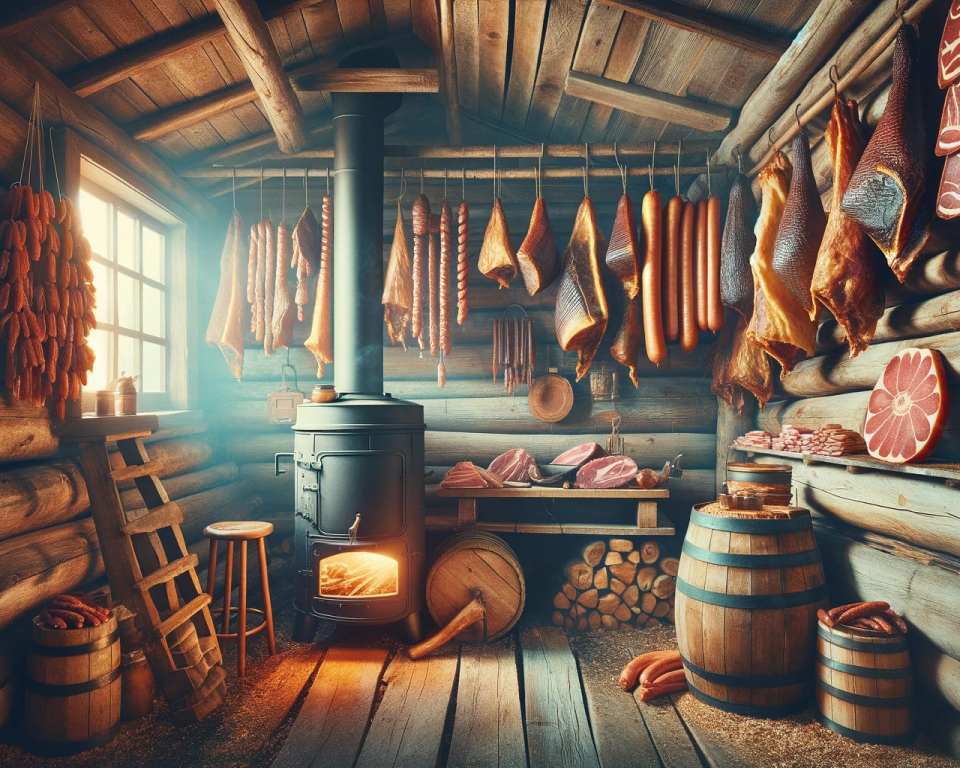
Essential Homesteading Skill #4: Foraging and Wildcrafting
As homesteaders, we have the unique opportunity to connect with and utilize the abundance of resources found in nature. Foraging and wildcrafting are essential skills that allow us to tap into the natural world and discover a wealth of wild edibles and medicinal herbs.
Foraging skills enable us to identify and gather a variety of wild edibles, such as berries, mushrooms, and edible greens. By understanding the characteristics and habitats of these plants, we can confidently forage for nutritious food sources that complement our homegrown produce.
Not only do wild edibles provide a sustainable addition to our diets, but they also offer a connection to the land and a sense of self-reliance. We can venture into nearby forests, meadows, and even our own backyard to discover a treasure trove of flavors and nutrients.
Moreover, foraging for medicinal herbs allows us to explore the healing properties of nature. By learning to identify and ethically harvest medicinal plants, we can create our own herbal remedies, teas, and tinctures. These natural remedies are not only cost-effective but also empower us to take charge of our health and well-being.
“Foraging and wildcrafting present a unique opportunity for us to reconnect with the natural world and tap into its abundance.”
When engaging in foraging and wildcrafting, it is crucial to prioritize sustainable practices. We must be mindful of not over-harvesting wild plants and ensure their regeneration for future generations. By adopting sustainable foraging techniques, such as selective harvesting, responsible gathering, and promoting plant propagation, we can preserve the delicate balance of our ecosystems.
Preserving wildcrafted items is equally important to extend their shelf life and maximize their benefits. Whether it’s drying herbs, creating infusions, or making herbal salves, proper preservation techniques help us enjoy the fruits of our foraging expeditions year-round.
Foraging and wildcrafting not only allow us to supplement our homestead’s food and medicine supplies but also foster a deep connection with the natural world. So let’s put on our foraging hats, venture out into the wilderness or even our own backyard, and embrace the richness that nature graciously provides.
“Foraging and wildcrafting skills enable us to tap into nature’s treasure trove of wild edibles and medicinal herbs, promoting self-sufficiency and a deeper relationship with the land.”
Essential Homesteading Skill #5: Beekeeping
Keeping bees is a valuable skill for homesteaders, providing not only a source of delicious honey and beeswax but also aiding in the essential pollination of plants on the homestead. Beekeeping is a rewarding and fascinating practice that requires knowledge and care to ensure the health and well-being of the bees.
Setting up and maintaining beehives are fundamental aspects of beekeeping. Choosing the right location for the hives, ensuring adequate shelter, and providing a suitable environment for the bees are crucial for their well-being. Regular inspections of the hives, checking for signs of disease or pests, and maintaining proper ventilation and cleanliness are important tasks for beekeepers.
Harvesting honey and beeswax is one of the most rewarding aspects of beekeeping. It requires careful timing and technique to ensure the bees’ needs are met while still allowing for the extraction of honey and wax. By using appropriate equipment, such as honey extractors and wax melters, beekeepers can safely and efficiently harvest these precious products.
Maintaining bee health is a top priority for beekeepers. Keeping a close eye on the overall well-being of the bees, monitoring for signs of disease or stress, and taking necessary measures to prevent and treat health issues are essential. This includes providing a balanced diet for the bees, managing varroa mites, and promoting strong colony growth.
“Beekeeping is not only a way to produce honey and beeswax, but it also plays a crucial role in the pollination of plants on the homestead. By keeping bees, we contribute to the overall health and sustainability of our gardens and orchards.”
With proper knowledge and dedication, beekeeping can be a highly rewarding and sustainable practice for homesteaders. The relationship between beekeeper and hive is a mutually beneficial one, where we provide the care and support the bees need, and they, in turn, provide us with the gifts of honey, beeswax, and pollination.
Essential Homesteading Skill #6: Food Self-Sufficiency
In addition to gardening, we can work towards greater food self-sufficiency on our homesteads by acquiring key skills. These skills include:
- Seed Saving: By learning the art of seed saving, we can preserve and replant open-pollinated heirloom seeds, ensuring a sustainable and self-reliant source of seeds for future harvests.
- Small Livestock Raising: Raising small livestock such as chickens, rabbits, or ducks can provide us with a consistent source of fresh eggs and meat. It’s important to learn proper care, feeding, and breeding techniques to maintain a healthy and productive flock.
- Cultivating Perennial Food Crops: Growing perennial food crops such as fruit trees, berry bushes, and perennial vegetables can offer long-term harvests with minimal annual effort. These resilient plants can provide a continuous food source year after year.
- Aquaponics: Implementing aquaponics systems allows us to combine hydroponics (growing plants without soil) with aquaculture (raising fish). The symbiotic relationship between the plants and fish helps create a self-sustaining ecosystem that produces both fresh vegetables and fish for our food needs.
- Hydroponics: Hydroponic systems enable us to grow plants in nutrient-rich water without the need for soil. This controlled environment allows for year-round cultivation and maximizes space efficiency.
By acquiring these skills, we can enhance our food self-sufficiency and reduce our reliance on external sources. Whether it be preserving seeds, raising small livestock, cultivating perennial food crops, or implementing innovative hydroponic or aquaponic systems, our homesteads can become hubs of self-sustainability and abundance.
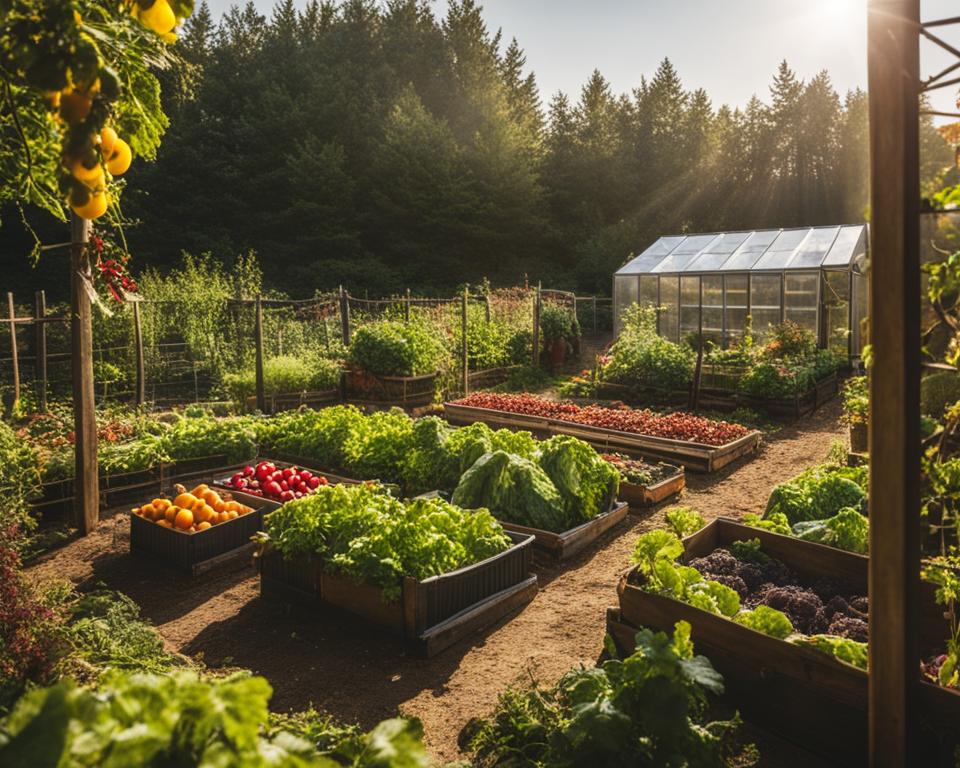
Essential Homesteading Skill #7: Basic Carpentry and DIY Skills
As homesteaders, we often find ourselves in need of basic carpentry and DIY skills to build structures, create furniture, and maintain our machinery and infrastructure. Proficiency in these skills allows us to be more self-reliant and adaptable on our homesteads.
One of the essential aspects of basic carpentry is the ability to construct various structures that support our homesteading endeavors. Whether it’s building raised beds for our vegetable gardens or constructing sturdy animal shelters, having basic carpentry skills enables us to create functional and durable structures that meet our specific needs.
Woodworking is another valuable skill that allows us to craft furniture and farm implements that enhance the functionality and aesthetics of our homesteads. With woodworking skills, we can create custom-made pieces that are built to last, such as tables, chairs, storage cabinets, and even decorative elements for our homes and gardens.
“Basic carpentry skills enable homesteaders to construct functional and durable structures, while woodworking skills allow for the creation of custom-made furniture and farm implements.”
In addition to building structures and woodworking, basic carpentry and DIY skills are essential for repairing and maintaining the machinery and infrastructure on our homesteads. Being able to troubleshoot and fix issues with our agricultural equipment, irrigation systems, and fencing not only saves us money but also ensures that our operations run smoothly and efficiently.
Here are some key aspects of basic carpentry and DIY skills:
- Measuring and marking
- Cutting and shaping wood
- Joinery techniques
- Using hand and power tools
- Basic construction principles
- Machinery repair and maintenance
By developing our basic carpentry and DIY skills, we can tackle a wide range of projects on our homesteads, from simple repairs and maintenance tasks to more complex construction and woodworking endeavors. These skills not only empower us to create and maintain the physical structures and infrastructure around us but also provide us with a sense of accomplishment and self-sufficiency.
Essential Homesteading Skill #8: Water Management
Efficient water management is crucial for sustainable living. As homesteaders, we recognize the value of this precious resource and the importance of utilizing it wisely. By implementing various water management techniques, we can ensure the long-term success of our homesteading endeavors.
Rainwater Harvesting
An excellent way to make the most of available water resources is through rainwater harvesting. By collecting rainwater from rooftops or other surfaces, we can store it for future use in our gardens, livestock, and other essential needs. Rain barrels or larger storage tanks can be used to capture and safely store rainwater, reducing the reliance on treated municipal water.
Drip Irrigation
Another effective water management technique is drip irrigation. Unlike traditional sprinkler systems that often result in water wastage, drip irrigation delivers water directly to the plant roots, minimizing evaporation and runoff. This method allows for precise watering, ensuring plants receive the necessary moisture while conserving water.
Well Maintenance
For homesteads with access to a well, proper well maintenance is vital. Regular inspections and maintenance, including checking for leaks, ensuring proper water flow, and conducting water quality tests, help maintain the efficiency and longevity of the well. Additionally, practicing responsible water usage habits ensures sustainable water management.
Pond Construction
Constructing a pond on the homestead can serve multiple purposes, including water storage, irrigation, and providing a habitat for aquatic plants and wildlife. Proper pond construction involves considerations such as location, size, depth, and suitable lining to maintain water levels and prevent leakage. It is crucial to adhere to local regulations and seek professional guidance, if necessary, to ensure the successful construction and maintenance of a pond.
“Water is a precious resource, and effective water management is essential for sustainable homesteading.”
By employing water management strategies such as rainwater harvesting, drip irrigation, well maintenance, and pond construction, we can optimize our water usage, reduce waste, and promote responsible stewardship of this valuable resource. Embracing efficient water management practices not only benefits our homestead but also contributes to a more sustainable and environmentally conscious way of life.
- – Rainwater harvesting
- – Drip irrigation
- – Well maintenance
- – Pond construction
Essential Homesteading Skill #9: Energy Independence
Achieving energy independence is an important goal for many homesteaders. With renewable energy skills, you can reduce your reliance on traditional power sources and create a more sustainable lifestyle.
One key aspect of energy independence is solar panel installation. By harnessing the power of the sun, you can generate clean and renewable energy for your homestead. Solar panels are designed to capture sunlight and convert it into electricity, providing a reliable source of power for your daily needs. Installing solar panels requires basic knowledge of electrical systems and construction, ensuring the panels are securely mounted and wired to your home or outbuildings.
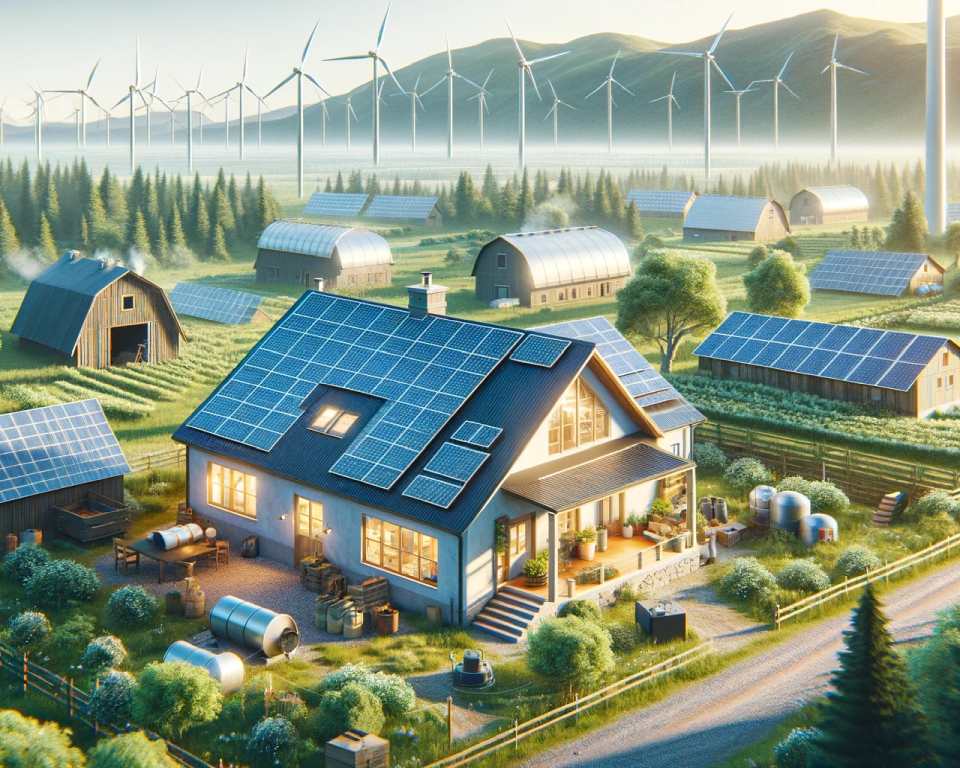
Another renewable energy skill to consider is wind turbine installation. Wind power is a viable option, especially for homesteaders in windy regions. Wind turbines are designed to capture the energy from the wind and convert it into electricity. Installing a wind turbine involves selecting an appropriate location with sufficient wind speeds, erecting a tower, and connecting it to your electrical system.
In addition to harnessing renewable energy sources, energy-efficient building design is crucial for minimizing energy consumption. By implementing strategies such as insulation, proper ventilation, and energy-efficient appliances, you can significantly reduce your energy needs. Energy-efficient design also includes utilizing natural light and optimizing the orientation of your buildings to maximize solar gain.
Finally, for homesteaders seeking a more self-reliant lifestyle, off-grid living is an option to consider. Off-grid living involves disconnecting from the traditional power grid and producing your own energy through renewable sources. This can involve a combination of solar panels, wind turbines, and other off-grid energy systems. It also requires careful management of energy consumption and storage to ensure a consistent power supply.
By developing renewable energy skills, such as solar panel and wind turbine installation, energy-efficient building design, and strategies for off-grid living, you can achieve energy independence and reduce your environmental impact. These skills not only contribute to a more sustainable homestead but also provide long-term cost savings and resilience in the face of changing energy markets.
Essential Homesteading Skill #10: Soap and Candle Making
As homesteaders, we strive to live sustainably and reduce our reliance on store-bought products. One way to achieve this is by learning the art of soap and candle making. By using natural ingredients and mastering various techniques, we can create our own homemade products that are both practical and eco-friendly.
Soap making is not only a useful skill but also a creative outlet. By combining ingredients such as oils, lye, and natural additives like herbs or essential oils, we can craft customized soaps tailored to our preferences and skincare needs. Whether you prefer a soothing lavender-scented soap or an exfoliating oatmeal-based bar, the possibilities are endless. The process involves carefully measuring and mixing the ingredients, followed by molding and curing the soap to perfection. With a bit of practice, we can become skilled soap artisans, producing beautiful and nourishing bars for ourselves and our loved ones.
Candle making is another enjoyable and rewarding homesteading skill. By melting wax, adding fragrance or essential oils, and pouring the mixture into molds or containers, we can create our own unique candles. Imagine the cozy ambiance of hand-poured beeswax candles or the delightful aroma of soy candles infused with natural scents. Candle making allows us to express our creativity while reducing our exposure to synthetic fragrances and petroleum-based products commonly found in commercial candles.
Why Choose Homemade Soap and Candles?
“Making our own soap and candles empowers us to take control of the products we use every day. We can ensure that only natural, skin-friendly ingredients are included, without any harmful additives or chemicals.”
There are several benefits to making our own soap and candles. Firstly, we have full control over the ingredients, ensuring that only natural and safe components are used. This is especially important for people with sensitive skin or allergies who may react to harsh chemicals found in store-bought products. Additionally, homemade soap and candles can be more cost-effective in the long run, as we can purchase ingredients in bulk and customize our creations to fit our needs.
Soap and candle making also provide an opportunity for self-expression and creativity. We can experiment with different scents, colors, and designs to create products that reflect our personal tastes and preferences. It’s a chance to unleash our artistic side and enjoy the satisfaction of crafting something unique and beautiful.
By incorporating soap and candle making into our homesteading journey, we can embrace a more sustainable and self-sufficient lifestyle. We reduce reliance on store-bought products and packaging waste while enjoying the benefits of using natural and homemade alternatives. So, let’s roll up our sleeves, gather our ingredients, and embark on the delightful journey of soap and candle making!
Essential Homesteading Skill #11: Herbal Medicine and Remedies
At our homestead, we understand the importance of self-sufficiency in healthcare. That’s why we have embraced the world of herbal medicine and remedies. Harnessing the power of nature’s pharmacy allows us to take control of our well-being and rely less on conventional medications. Through the cultivation and utilization of medicinal herbs, the creation of tinctures and herbal teas, as well as the development of natural remedies, we can heal and nourish our bodies in a holistic manner.
Growing and harvesting medicinal herbs is at the heart of herbal medicine. We carefully tend to our herb garden, nurturing each plant as it flourishes under our care. The bountiful array of herbs we cultivate includes chamomile, lavender, peppermint, echinacea, and many more. With each herb comes a unique set of healing properties, allowing us to address a myriad of health concerns naturally.
“Nature’s pharmacy is a treasure trove of healing wonders waiting to be explored.”
From our carefully grown and harvested herbs, we create a variety of herbal preparations that are integral to our wellness routines. Tinctures are concentrated liquid extracts that preserve the medicinal properties of herbs. These extracts are easy to make and store, providing us with potent herbal remedies whenever the need arises. We also enjoy the soothing benefits of herbal teas, blending our herbs to create delicious and nourishing infusions. These teas not only provide us with a moment of tranquility but also support our overall well-being.
When it comes to natural remedies, our homestead is well-equipped. We have dedicated ourselves to learning and perfecting the art of creating homemade remedies for common ailments. From cold and flu remedies to skin salves and digestive aids, we rely on the power of plants to bolster our health. Our community often seeks our expertise for natural solutions, and we take pride in sharing our knowledge and empowering others to take control of their health.
Basic first-aid and emergency care skills
In addition to herbal medicine, we believe in being prepared for emergencies. We have acquired basic first-aid and emergency care skills to ensure we can provide immediate assistance when needed. Whether it’s a minor cut or a more serious situation, we are equipped to handle it with confidence.
At our homestead, herbal medicine and remedies play a vital role in our self-sufficient lifestyle. By harnessing the power of medicinal herbs, creating tinctures and herbal teas, and developing natural remedies, we are able to support our health and the health of those around us. Join us on this journey of herbal healing and explore the wonders of nature’s medicine cabinet.
Sewing and Textile Arts
At the heart of homesteading lies the ability to create and mend essential items with our own hands. Sewing skills are a valuable asset for every homesteader, enabling us to make and repair clothing and other textile items. Whether it’s using a needle and thread or a sewing machine, having basic sewing skills allows us to create unique garments tailored to our needs, reducing our reliance on store-bought clothing. With these skills, we can also mend and darn clothing, extending their life and reducing waste.
In addition to sewing, knitting and crocheting are valuable textile arts that bring warmth and creativity to the homestead. Knitting and crocheting allow us to create cozy scarves, hats, blankets, and many other items using just a pair of needles or a hook. These skills not only provide us with handmade items but also serve as a form of relaxation and self-expression. Whether we’re a beginner or an experienced knitter or crocheter, these crafts can be enjoyed by all.
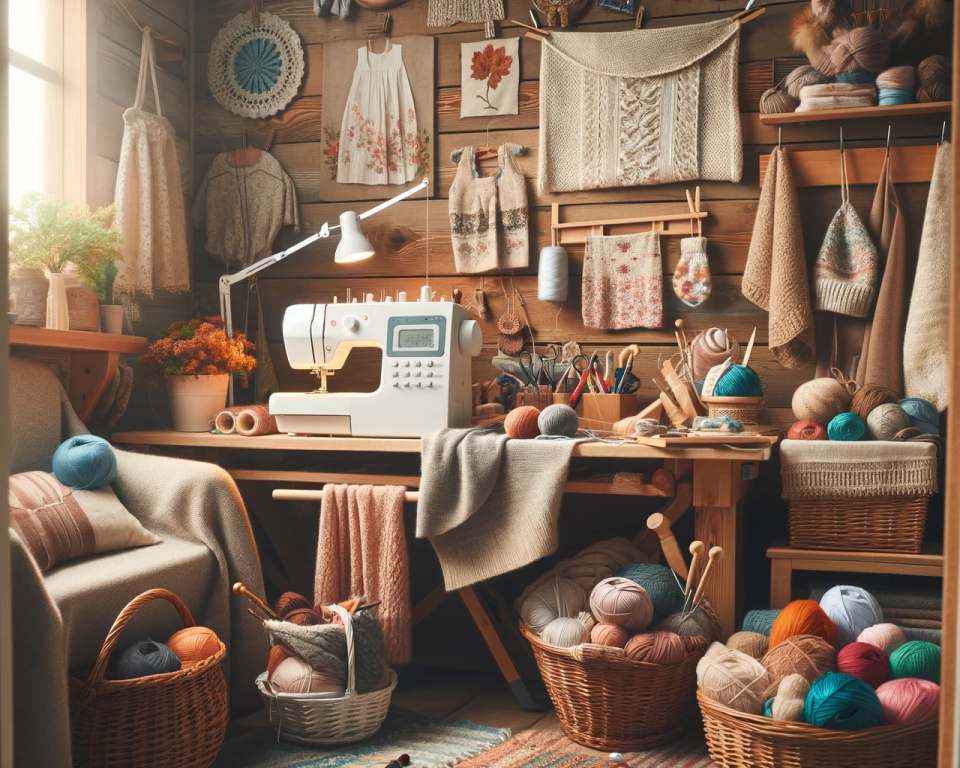
Textile arts, such as quilting and rug making, are ways in which we can repurpose and reuse fabric scraps, creating beautiful and functional pieces for our homes. Quilting allows us to piece together various fabrics to make colorful and cozy quilts, while rug making gives new life to old fabric strips by weaving them into durable and unique floor coverings. By incorporating these textile arts into our homesteading journey, we not only add beauty to our surroundings but also utilize resources in a sustainable way.
In conclusion, sewing and textile arts play a vital role in homesteading, empowering us to be self-sufficient and resourceful. With sewing skills, we can create and mend clothing, reducing waste and embracing a sustainable lifestyle. Knitting, crocheting, and other textile arts allow us to express our creativity while providing warmth and comfort. By incorporating these skills into our homesteading practices, we enhance our ability to create, repurpose, and make the most of the resources available to us.
FAQ
What are essential homesteading skills?
Essential homesteading skills include organic gardening, food preservation, livestock management, natural building, renewable energy, foraging, and more. These skills are crucial for self-sufficiency and sustainable living.
What gardening skills are important for homesteading?
Important gardening skills for homesteading include soil preparation, crop rotation, pest and weed management, and food preservation techniques like canning, freezing, and drying.
What skills are involved in animal husbandry for homesteading?
Animal husbandry skills for homesteading include caring for and feeding livestock, managing breeding and reproduction, maintaining animal health, and processing dairy and meat products.
What food preservation skills are essential for homesteading?
Essential food preservation skills for homesteading include canning fruits and vegetables, fermentation for foods like sauerkraut, dehydration of fruits and vegetables, making homemade jams and pickles, and preserving meat through methods such as smoking and curing.
What skills are involved in foraging and wildcrafting for homesteading?
Foraging and wildcrafting skills for homesteading involve identifying and using wild edibles and medicinal herbs, practicing sustainable foraging techniques, and preserving wildcrafted items for later use.
What skills are needed for beekeeping on a homestead?
Beekeeping skills for a homestead include setting up and maintaining beehives, safely handling and managing bees, harvesting honey and beeswax, and addressing common bee health issues.
What other skills can homesteaders learn for greater food self-sufficiency?
In addition to gardening, homesteaders can learn skills such as seed saving, raising small livestock, cultivating perennial food crops, and implementing aquaponics or hydroponics for year-round food production.
What carpentry and DIY skills are important for homesteading?
Basic carpentry and DIY skills for homesteading include building structures like raised beds and animal shelters, basic woodworking for furniture and farm implements, and repairing and maintaining machinery and infrastructure.
What water management skills are vital for sustainable living on a homestead?
Water management skills for homesteading include rainwater harvesting, drip irrigation, well maintenance, and pond construction for water storage and management.
What renewable energy skills can homesteaders learn?
Homesteaders can learn renewable energy skills like solar panel and wind turbine installation, energy-efficient building design, and strategies for off-grid living to achieve energy independence.
What skills are involved in soap and candle making for homesteading?
Soap and candle making skills for homesteading involve using natural ingredients and learning various techniques for creating homemade soap and candles as a way to reduce reliance on store-bought products.
What skills are needed for herbal medicine and remedies on a homestead?
Herbal medicine skills for homesteading include growing and harvesting medicinal herbs, making tinctures, herbal teas, and natural remedies, as well as basic first-aid and emergency care skills.
What sewing and textile arts skills are important for homesteading?
Basic sewing skills are essential for making and repairing clothing and other textile items on a homestead. Skills include hand and machine sewing, mending and darning clothing, knitting, crocheting, and other textile arts like quilting and rug making.

